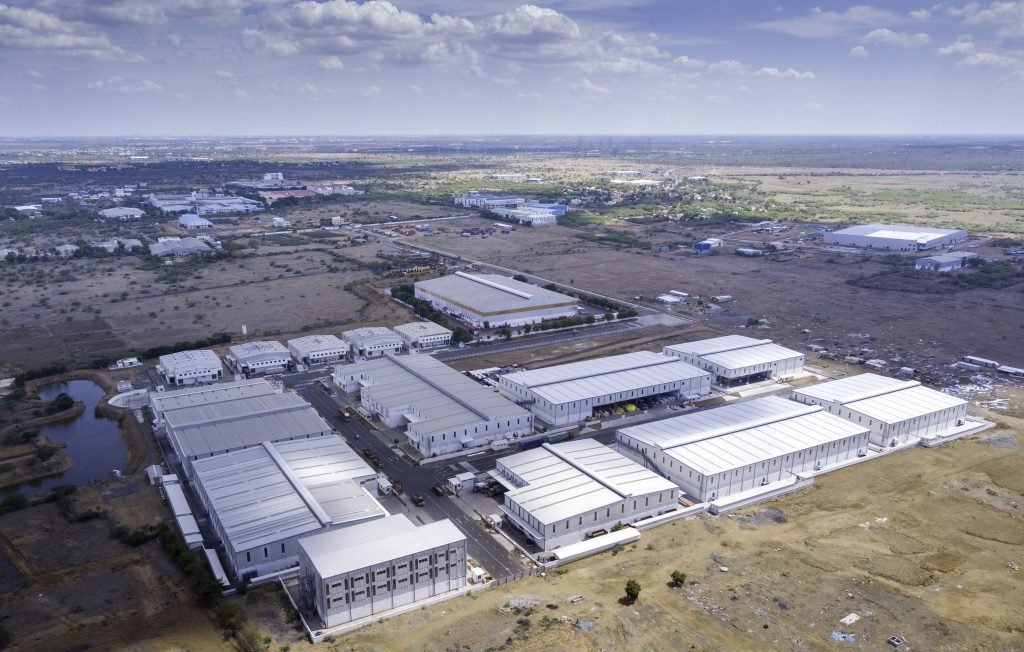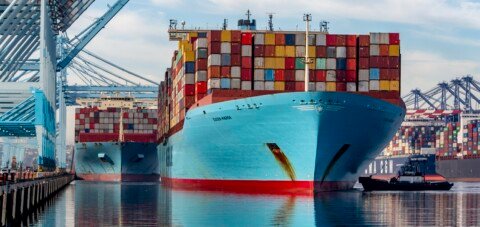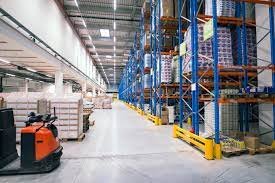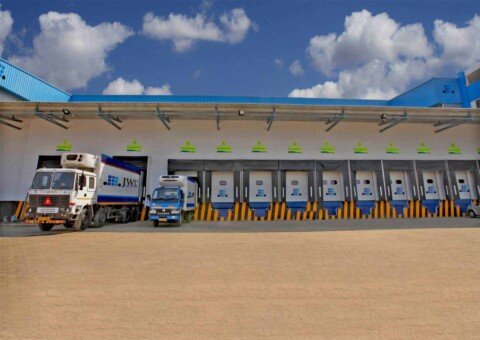Indian logistics industry is witnessing a revolution with several Grade A warehouses and Free Trade Warehousing Zones (FTWZs) gearing up to offer world-class services to the customers. However, in this post COVID-19 scenario, rapidly growing Indian economy will need an efficient and fairly vast network of warehouses and logistics facilities. The government’s recent initiatives like Make in India, Vocal for Local, Ease of Doing Business, Manufacturing in India, and various other ambitious schemes and policies launched have definitely triggered growth opportunities in the right direction for the Indian logistics industry.
FTWZs are considered as direct contributors towards overall economic development. FTWZs are established to easily facilitate the foreign trades without involving manufacturing processes and allow hassle-free handling of EXIM cargo to achieve efficiency and cost effectiveness. In the long run, FTWZs are believed to help in attracting foreign investors for servicing India’s manufacturing and consumption demand more efficiently. Apart from the domestic demand, these suppliers will have the opportunity to consider India as a potential transshipment destination for servicing the neighboring countries.
Location wise also, India offers excellent position on the Global Maritime Trade Route, which carries almost 60 per cent global transport, thus offering excellent transship opportunities for FTWZs in India.
According to World Bank Data, International trade accounts for 58 per cent in 2019 of Global GDP and for India, trade comprises 39 per cent of India’s GDP for the same year. This comparison indicates an ample opportunity to increase trading activity in India. However, for carrying out efficient trading activities, improvement of infrastructure at warehouses across the country needs special attention of the developers.
Also, the WDB states that GDP share of India’s Export and Import of goods and services is recorded at 18 per cent and 21 per cent respectively. Focused programmes under Make in India and other fiscal initiatives to promote India’s manufacturing activities are expected to increase the share of EXIM cargo for Indian economy in the coming years. This dynamic of Indian economy increases the potential and opportunity of FTWZs in India.
According to the Ministry of Commerce and Industry, there are eight approved FTWZs in India. Out of eight FTWZs, four have been notified. Out of 4 notified FTWZs, only three are operational at present.
According to the reports, there is no investment made by the Central Government in these FTWZs yet. Total amount of Rs 3,315.81 crores have been invested mainly by the private Developers/Co-developers in these FTWZs during the last five years. Further, revenue of Rs 13,051.19 crores has been generated by these FTEZs during the last five years.
Setting up of new FTWZs and/or SEZs is primarily private investment driven in India.
Below is a statement showing details of the FTWZs in India:
Details Free Trade and Warehousing Zones (FTWZs) SEZs in India
| Sl. No. | Name of the developer | Location | Area Hectares | SEZ status |
| 1 | Arshiya International Limited | Taluka Panvel, District Raigad, Maharashtra | 57.898 | Notified/Operational |
| 2 | J Matadee Free Trade Zone Private Limited | Sriperumbudur Taluk, Kancheepuram District, Tamil Nadu | 40 | Notified/Operational |
| 3 | Arshiya Northern FTWZ Limited | Moujpur, Bulandshar, Uttar Pradesh | 51.4394 | Notified/Operational |
| 4 | Arshiya International Ltd | Taluka & District Nagpur, Maharashtra | 43.26 | Notified |
| 5 | Lepakshi Knowledge Hub Private Ltd | Chillamaturu Mandal, Ananthapur District, Andhra Pradesh | 40 | Formal Approval |
| 6 | ISPRL FTWZ Padur (Indian Strategic Petroleum Reserves Ltd) | Padur, Karnataka | 41.20 | Formal Approval |
| 7 | Cochin Port Trust | ThoppumpadyRamesaram Village, Cochin, Kerala | 40.85 | Formal Approval |
| 8 | Venkatesh Coke & Power Ltd | Ponneri Taluk, Thiruvalur District, Tamil Nadu | 46.71 | Formal Approval |
Future Growth Prospects
A recent report by the research firm, JLL states that India has not yet achieved its optimum stage in FTWZ development. There are very few operational FTWZs facilities currently in India. These are Arshiya; Khurja, MMTC & ILFS; Kandla, Adani; Mundra, Arshiya; Panvel, J Matadee; Chennai, NDR, Ennore. Rs 3,315 crores have been invested by the private developers/co-developers in these FTWZs during 2015-2019 and revenue of Rs 13,051 crores have been generated by these FTWZs during 2015-2019.
As per new reports, new investments from DPW (Chennai and JNPT), NDR (Raigad), Karanja (Mumbai) are expected.
Also, the recent policy intervention through notification in October 2020 (G.S.R. 678 {E}), also allows domestic supplies from domestic tariff area to foreign suppliers in FTWZ with admissible drawback or any other benefits. This notification in turn allows international buyers to consolidate, pack, and prepare more efficient supply chain plan for their cargo from India.
“From a user’s perceptive, there shall be a driver for marketability of the FTWZ facility,” says, Chandranath Dey, Head- Operations & Business Development, Industrial Services, JLL India.
“In the Indian context, Computer Hardware, Computer Peripherals, Consumer Electronics, Electronics Components, Electronics Instruments, Telecom Instruments, Defence Equipment along with various components related to planned manufacturing units all come under Make in India programme,” Dey further adds and jots down the benefits:
- Very high supply reliability (including spares) to domestic customers
- Quality control on imported spares, parts and component prior to duty-payment
- Value Added Services after SKU level break bulking + CKD assembly
- Bring down lead time of equipment and spare parts for end customer delivery
- Deferment of import duty till the date of supply to domestic customers
- Warehouse/storage hub in India comparable to origin countries
FTWZs operating in India at present are highly competitive and offer state-of-the-art warehousing and trading facilities. This includes expedited customs clearance, cutting-edge technology and infrastructure, inland container depots and yards, commercial complexes, etc. Companies can operate via FTWZs in two efficient ways:
- As a Trading Unit: For the purpose of carrying out authorised operations such as trading, warehousing, labelling, consolidation, etc.
- As a Service Unit: Availing the services of an authorised trading unit.
According to government’s policies in this regard, companies that are registered as Trading Units must be an Indian entity with a nature of the business that includes import-export, trading, shipping, etc. Authorised operations are listed in the Letter of Approval (LOA) which is granted by the Unit Approval Committee. LOAs are valid for five years with the option to extend for another five years. Several specific activities are allowed to be conducted in FTWZs like:
- Trading which is inclusive or exclusive of labelling
- Packaging and repacking
- Re-export, resale, re-invoicing of goods
- Warehouse storage of goods for domestic or international clients
- Value add or optimising activities on goods
- Assembly of complete or semi-knockdown of goods
FTWZs offer unparallel advantages to international trade. Aside from the reduction in formalities for customs and excise, other incentives include income tax and demurrage costs exemptions. Increased logistics efficiency, supply chain management and operations add to faster turnaround times.
Comparison: FTWZ or Grade A warehouses
For establishing robust and efficient supply chain for cargo movement, demand for Grade A warehouse space is becoming more attractive propositions for 3PL, e-commerce, and other occupiers. Grade A specification and it’s development model helps to achieve efficient use of built space, adequate use of modern material handling equipment and other technology for in-box cargo tracing, monitoring and movement. FTWZ space is typically used for the same specification. Enlisted are few key pointers which make FTWZ and warehouses different from each other.
| FTWZs | Domestic Warehouses |
| Only for EXIM cargo | Only domestic cargo can be handled |
| Manage EXIM cargo with diversified value added services (packing, grading, labeling etc.) | Diversified value added services (packing, grading, labeling etc.) but only for domestic cargo |
| Re-export to other foreign countries more efficient way | Re-exports not allowed |
| Cargo consolidation and re-distribution in the supply chain of global trading activities | Cargo consolidation and re-distribution in domestic supply chain |
However, the near real comparison of FTWZ would be custom bonded warehouses, as both handles EXIM cargo.
Inclusive Development
FTWZs are truly being supported by the government’s ambitious plans. Schemes like Make in India, PLI and other investment promotion benefits have a major impact on potential FTWZ demand. It is unlikely to establish independent production process without intervention of any foreign cargo for any manufacturing unit planning to come under these schemes. It is obvious that some spares, components, and/or semi-finished material are to be imported from different foreign suppliers. To establish a new supply chain model for manufacturing unit in India requires space with efficient and hassle free EXIM cargo handling area. FTWZs are believed to be the only solution for providing this infrastructure and services in India. The government’s infrastructure initiatives such as Bharatmala under which the government is planning logistics parks at 35 locations and Sagarmala which aims to develop and modernise Indian ports are also expected to boost the expansion of the logistics sector. At the same time, latest technological advancements are being introduced, such as automation and robotics to improve efficiency across the supply chain. The industry is also also witnessing a gradual shift from unorganised to organised players in the warehousing sector. Experts expect all these factors will contribute towards achieving growth and a seamless supply chain in the coming years.
Leading Indian airline SpiceJet has also launched India’s first-ever FTWZ at an airport—at GMR Aerospace & Industrial Park in Hyderabad’s Rajiv Gandhi International Airport (RGIA—which is expected to transform the India’s pharma capital into an air transshipment hub like Singapore, Malaysia or Dubai. The Indian airline had signed an agreement to lease with GMR Hyderabad Aviation SEZ (GHASL), a 100 per cent subsidiary of GMR Hyderabad International Airport (GHIAL), in March 2020 by which the airport constructed a 33,000 sq ft facility for the airline to carry out the warehousing, distribution and trading activity. The FTWZ is similar to the facilities and boast infrastructural capabalities like Singapore Changi Airport and Al Maktoum International Airport in Jebel Ali, Dubai. Any foreign customers who have not registered in India can easily come in and keep their cargo in this space without getting into the taxes of India and without paying any duties. With the e-commerce and cross border boom, there is a lot of cargo moving through the air. And the facility is expected to help industry stakeholders.
SpiceJet is in negotiations with different metro airports in the country to set up similar FTWZs.







